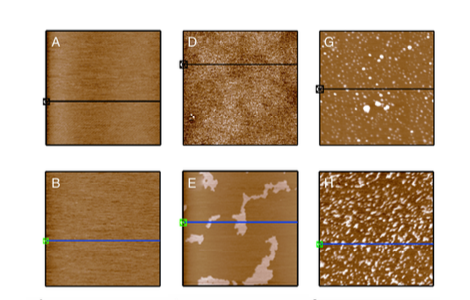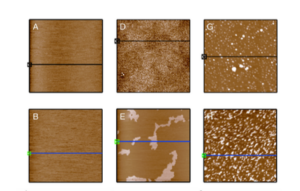Diagnostic précoce d'Alzheimer : l'Université de Tel Aviv montre les niveaux réduits du gène RGS2

[:fr]Le Dr David Gurwicz du Département de génétique moléculaire humaine et de biochimie de l’Université de Tel Aviv et le Prof. Ilana Gozes de l’Ecole des neurosciences, responsable de la chaire pour l’étude des facteurs de croissance de l’Université ont découvert, avec leur doctorante en co-tutelle Edva Hadar, qu’un gène spécifique, le RGS2, apparaît à des niveaux significativement réduits dans le sang des patients atteints d’Alzheimer, ce qui en fait un marqueur clair de la maladie et permettra son diagnostic précoce par une simple prise de sang, ainsi que le développement à terme de nouveaux traitements.
« Nous avons indentifié un nouveau marqueur dans le sang qui n’était pas connu jusqu’à présent comme indicateur de la maladie, le RGS2 » explique le Prof. Ilana Gozes. Le gène RGS2 est connu depuis de nombreuses années comme étant responsable de l’inhibition des signaux transmis entre les neurones, mais il n’avait jusqu’à présent pas été mis en relation avec la maladie d’Alzheimer. Les chercheurs de l’UTA ont constaté que le niveau du gène RGS2 est considérablement réduit dans le sang des patients atteints d’Alzheimer, et que donc le gène peut servir de base pour le diagnostic de la maladie par un simple test sanguin.
Pour la première fois un marqueur biologique clair
La découverte pourrait constituer une avancée majeure dans l’étude de cette grave maladie, principale cause de démence chez les personnes âgées et en développement constant avec l’augmentation de l’espérance de vie. En effet, en dépit des efforts considérables déployés par les chercheurs du monde entier depuis des décennies, on n’a pas encore trouvé d’outil efficient pour son diagnostic précoce ni de traitement efficace pour la soigner.

«Au cours des dernières années, on a émis des doutes sur le rôle de la protéine bêta-amyloïde comme indicateur de la maladie d’Alzheimer, car il est avéré qu’elle s’accumulait également dans le cerveau de personnes âgées saines », note le Dr. Gurwicz. « L’une des hypothèses avancées pour résoudre ce problème est que certaines personnes sont plus sensibles que d’autres à l’accumulation de bêta-amyloïde, et présentent donc un risque plus élevé de contracter la maladie».
Pour tester cette hypothèse, les chercheurs ont prélevé des échantillons de cellules sanguines sur 28 personnes en bonne santé et les ont exposées à la protéine bêta-amyloïde en laboratoire. Ils ont effectivement pu identifier alors deux groupes de cellules: celles qui présentaient une sensibilité élevée à la bêta-amyloïde (s’exprimant par l’inhibition de la croissance cellulaire), et celles qui lui ont montré une faible sensibilité. Ils ont alors cherché à déterminer la différence entre les deux groupes.
La recherche a été effectuée grâce à une technologie innovante de prospection sur l’ensemble du génome. À leur grande surprise, les chercheurs ont découvert un marqueur clair : le gène RGS2. Il s’est avéré que le niveau de celui-ci était également plus faible dans les cellules sanguines sensibles aux bêta-amyloïdes que dans les autres. Une autre expérience a de même montré que le niveau de ce gène était plus bas dans les cellules de sang prélevées chez les personnes atteintes de la maladie d’Alzheimer que dans celles de volontaires en bonne santé du même groupe d’âge.
Aider les patients à vieillir dignement
Pour confirmer leurs conclusions, les chercheurs ont utilisé des bases de données existantes de l’expression des gènes dans le sang des patients atteints d’Alzheimer et dans des tissus cérébraux prélevés sur des patients après leur mort. Les résultats, obtenus au moyen de méthodes avancées d’exploration des données, confirment les conclusions de laboratoire : l’expression du gène RGS2 s’est avérée moindre dans le sang et les tissus cérébraux des patients atteints d’Alzheimer, que dans ceux des personnes sans la maladie. Plus encore, il s’est avéré que la baisse significative de l’expression du gène se retrouvait déjà dans le sang de personnes au premier stade de la maladie, défini comme ‘déclin cognitif léger’. Il s’agit donc pour la première fois d’un marqueur biologique clair, qui pourra permettre le diagnostic des patients atteints d’Alzheimer dès les premiers stades de la maladie, et peut-être même de les distinguer de ceux présentant un déclin cognitif pour d’autres raisons, et tout cela par un simple test sanguin.
La prochaine étape sera d’étudier le gène et de voir d’où vient son manque. On pourra alors palier ce manque et dans l’avenir, vaincre la maladie. « C’est une maladie malheureusement très courante et nous souhaitons la retarder le plus possible pour donner aux personnes la possibilité de vieillir dignement. L’objectif est de pouvoir prévoir qu’une personne va être atteinte de la maladie à moment donné, pour pouvoir la traiter quand il existera un médicament préventif », conclue le Prof. Gozes.
Les Dr. Elena Milanesi, Noam Shomron et Dafna Weisglass de l’Ecole de médecine de l’Université de Tel-Aviv, ainsi que des groupes de recherche d’Italie et de République tchèque, ont également participé à cette étude.
Publication dans la revue Translational Psychiatry, oct 2016
Auteur, Sivan Cohen-Wiesenfeld, PhD Rédactrice en chef de la newsletter Université de Tel-Aviv/AFAUTA
Fondée en 1970, l’AFAUTA est une association à but non lucratif. Sa mission principale est l’action en faveur d’une prestigieuse université israélienne, l’Université de Tel-Aviv, qu’elle assiste dans ses plans de développement à long terme. Elle travaille aussi au renforcement des relations entre l’Université et l’ensemble de la communauté française.[:en]A new Tel Aviv University study identified a gene coding for a protein that turns off neurotransmission signaling, which contributes to Alzheimer’s disease (AD).
The gene, called RGS2 (Regulator of Protein Signaling 2), has never before been implicated in AD. The researchers report that lower RGS2 expression in AD patient cells increases their sensitivity to toxic effects of amyloid-β. The study, published in Translational Psychiatry, may lead to new avenues for diagnosing Alzheimer’s disease — possibly a blood test — and new therapies to halt the progression of the disease.
The research was led by Dr. David Gurwitz of the Department of Human Molecular Genetics and Biochemistry at TAU’s Sackler School of Medicine and Prof. Illana Gozes, the incumbent of the Lily and Avraham Gildor Chair for the Investigation of Growth Factors; Head of the Elton Laboratory for Molecular Neuroendocrinology at TAU’s Sackler School of Medicine; and a member of TAU’s Adams Super Center for Brain Studies and TAU’s Sagol School of Neuroscience. Also participating in the research were their PhD student Adva Hadar and postgraduate student Dr. Elena Milanesi, in collaboration with Dr. Noam Shomron of the Department of Cell and Developmental Biology at TAU’s Sackler Faculty of Medicine and his postgraduate student Dr. Daphna Weissglas; and research teams from Italy and the Czech Republic.
Identifying the suspect
« Alzheimer’s researchers have until now zeroed in on two specific pathological hallmarks of the chronic neurodegenerative disease: deposits of misfolded amyloid-β (Aβ) peptide plaques, and phosphorylated tau protein neurofibrillary tangles found in diseased brains, » Dr. Gurwitz said. « But recent studies suggest amyloid-β plaques are also a common feature of healthy older brains. This raises questions about the central role of Aβ peptides in Alzheimer’s disease pathology. »

The researchers pinpointed a common suspect — the RGS2 gene — by combining genome-wide gene expression profiling of Alzheimer’s disease blood-derived cell lines with data-mining of previously published gene expression datasets. They found a reduced expression of RGS2 in Alzheimer’s disease blood-derived cell lines, then validated the observation by examining datasets derived from blood samples and post-mortem brain tissue samples from Alzheimer’s patients.
« Several genes and their protein products are already known to be implicated in Alzheimer’s disease pathology, but RGS2 has never been studied in this context, » Dr. Gurwitz said. « We now propose that whether or not Aβ is a primary culprit in Alzheimer’s disease, neuroprotective mechanisms activated during early disease phases lead to reduced RGS2 expression. »
Sensitizing brain neurons to potential damage
The new TAU study furthermore proposes that reduced RGS2 expression increases the susceptibility of brain neurons to the potentially damaging effects of Aβ.
« We found that reduced expression of RGS2 is already noticeable in blood cells during mild cognitive impairment, the earliest phase of Alzheimer’s, » Dr. Gurwitz observed. « This supported our theory that the reduced RGS2 expression represents a ‘protective mechanism’ triggered by ongoing brain neurodegeneration. »
The team further found that the reduced expression of RGS2 was correlated with increased Aβ neurotoxicity. It acted like a double-edged sword, allowing the diseased brain to function with fewer neurons, while increasing damage to it by accumulating misfolded Aβ.
« Our new observations must now be corroborated by other research groups, » Dr. Gurwitz concluded. « The next step will be to design early blood diagnostics and novel therapeutics to offset the negative effects of reduced expression of the RGS2 protein in the brain. »
Publication in Translational Psychiatry, Oct. 2016[:]







